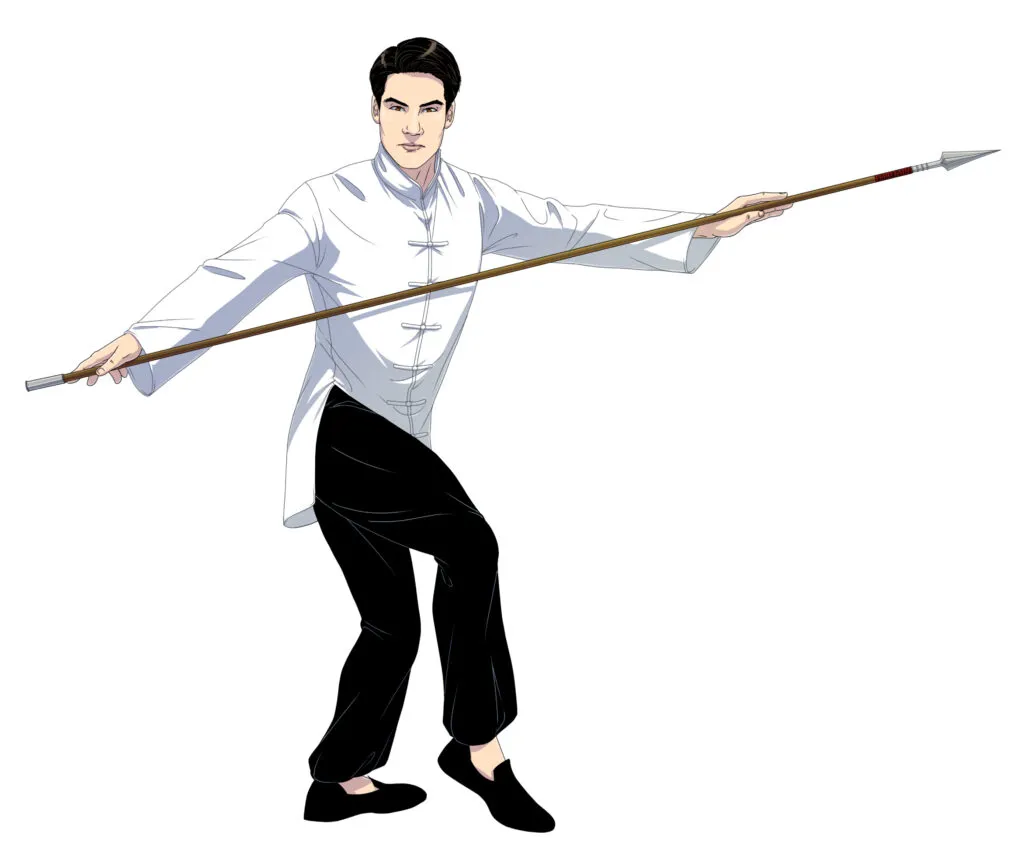
Your average wuxia\xianxia\cultivation\progression fantasy author makes a simple distinction between gongfu and cultivation: gongfu is for fighting, cultivation is for gaining power. To become more powerful, characters meditate and consume exotic substances. To express that power, they employ fancy-sounding martial techniques.
There is a disconnect between cultivation methods and fighting methods. How a character gains power has little to do with how he emits it. LitRPGs try to close this gap by implementing an experience system. A character defeats enemies, he gains experience, he levels up. While that may be elegant, why cultivate in the first place? If cultivation allows for permanent stat increases without fighting, then why fight?
When you think about this carefully, you will see that the average author implements these methods simply to chase tropes. Popular books employ these tropes, so they attempt to bottle lightning by reproducing these tropes. Enough of them succeed that these tropes become genre conventions. They don’t make sense, and they’re not meant to make sense.
The ancients, on the other hand, had a different approach. To them, a system had to make sense. They were soldiers, bodyguards, warrior monks and police officers. They lived on the edge of life and death. They practiced martial arts to survive a turbulent age. They practiced cultivation to understand reality at a deeper level—and also to improve their martial abilities. A system had to work, or its practitioners would not survive to pass it on. As such, they treated gongfu and cultivation differently from your average cultivation fantasy author.
The ancients saw no difference between gongfu and cultivation.
Gongfu refers to a skill you learn through hard work and constant practice. It is a generic term, and can be used for anything ranging from tea ceremony to cooking to calligraphy. Development of martial skill also requires hard work and constant practice, and so in Western vernacular, gongfu is synonymous with martial arts.
Real-life cultivation is not a one-and-done deal. You do not simply sit, clear your mind, breathe and circulate qi, and suddenly become a demi-god. Neither do you swallow a pill and immediately gain the powers of an immortal. Cultivation requires consistent, disciplined, focused effort. You practice it over and over and over, over days and months and years and decades. In this sense, ‘cultivation’ has parallels to agriculture, which might well be what the original English translators were thinking of.
The genius of the Chinese internal martial arts is the explicit combination of gongfu and cultivation. When you practice martial arts, you are also cultivating qi. When you cultivate qi, you are also practicing martial arts.
The most famous practice in xingyiquan is called zhan zhuang, standing practice. It is deceptively simple. You simply assume the san ti shi, the default fighting stance of the art, and stand in silence. And yet, this practice confers immense benefits.
While standing, you develop proprioception and tensegrity. You learn how to hold your body in such a way that it is ready to spring in any direction, and yet is completely free from unnecessary tension. You train your fast-twitch muscles, preparing them to generate explosive power when you do move. When you stand for long periods—five minutes, ten minutes, thirty minutes, an hour, several hours—you develop discipline, patience and willpower, not to mention strong leg muscles. By standing still, you cultivate calmness and concentration. And the stance is also itself a powerful method to cultivate yang qi.
All this flows from a single standing method.
Similarly with baguazhang, martial arts and meditation are one and the same. By moving through circles and spirals, you develop balance, flexibility, smooth movement, and methods of power generation. You are also circulating qi through your meridians, cultivating your internal energy. By expressing the fundamental patterns of the universe, you yourself become one with the Way.
Even other arts that aren’t traditionally considered to be internal arts also follow this same approach. Shaolin gongfu combines Chan Buddhism and martial arts: warrior monks cultivate calmness, clarity of thought, and peaceful hearts. Kung Fu San Soo, an Americanized Chinese martial art feared for its ferociousness, emphasizes developing good moral character even as it teaches students how to tear an aggressor apart.
The average English-language cultivation author is a Westerner, and in the West, ideas are fixed and discrete. A is A, not-A is not-A, and A cannot be not-A. Not so in Chinese culture. As we have seen, martial art is movement, meditation and metaphysics all in one. This is why martial arts is a vehicle for transformation, as described in the previous post.
Saga of the Swordbreaker dives deeply into Chinese culture and philosophy. This is shown in the martial arts scenes of the series. As far as I know, this is the only cultivation series out there that accurately depicts the higher function of martial art, from the perspective of a practitioner.
You can gorge on mass-produced written-to-market tropefests filled with shallow dreck. Or you can explore the roots of wuxia, xianxia, and cultivation fiction, and discover something new about Chinese culture, human nature, and reality itself.
To choose the latter, back Saga of the Swordbreaker here!